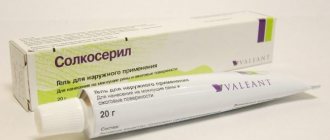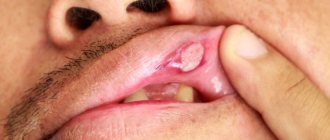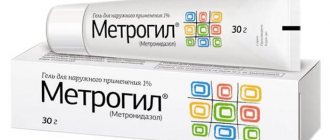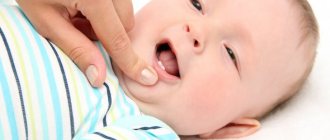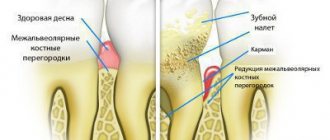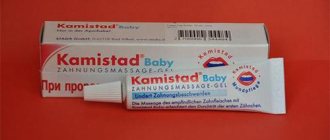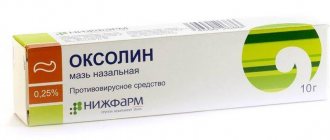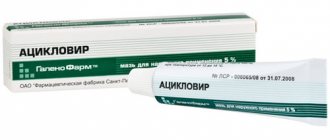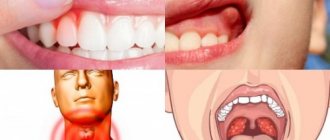Photo: Solcoseryl ointment and gel - instructions for use, analogues
Solcoseryl is a drug used for the rapid and effective healing of wounds, burns and trophic ulcers. The use of the drug is possible in accordance with the instructions and the dosage and special instructions indicated therein. Before starting to use the drug, it is better to consult a doctor.
Solcoseryl is classified as an activator of tissue metabolic processes. It stimulates trophism and cell regeneration. Solcoseryl ointment and gel are used topically, but there are also injections of this medication that allow the drug to be administered directly into a vein or artery.
- Description of the drug
- Action
- Release form
- Compound
- Indications
- Dosage and Application
- Contraindications
- Side effects Overdose
- Solcoseryl during pregnancy
Description of the drug
Solcoseryl is a universal drug that promotes restoration, regeneration and improvement of metabolism in tissues. Any of the dosage forms of the drug contains a dialysate obtained from the blood of dairy calves. To collect dialysate, blood is collected from exclusively milk-fed calves.
The drug is used in medicine and cosmetology. Solcoseryl is included in many cosmetic products that help smooth out wrinkles and make the skin smoother and more elastic. At the same time, independent use of Solcoseryl for cosmetic purposes is unsafe and can lead to allergic reactions, burning of the skin and damage.
What kind of medicine is Solcoseryl?
The drug has a beneficial effect on tissue metabolic processes. It improves tissue nutrition in case of damage, and also activates repair and regeneration processes.
Solcoseryl in injection form is used for extensive circulatory disorders (diseases of peripheral veins and arteries, strokes), ointment and jelly are used to treat ulcerative lesions and slow-healing wounds, and the gel is an ophthalmic agent. Thus, each of the release forms performs its own task of restoring damaged tissue.
The rate of absorption and distribution of the drug in the body, as well as the route of its elimination, cannot be determined by methods usual in pharmacology due to the characteristics of the active substance.
According to the results of a study of the drug on animals, the pharmacological effect develops within half an hour after the bolus injection. The therapeutic effect lasts for 3 hours.
Action
The main therapeutic properties of the drug are:
- Activation of reparative and regenerative processes in tissues.
- Strengthening the synthesis of collagen fibers.
- Stimulates the division and growth of healthy skin cells.
- Elimination of oxygen starvation of the skin.
- Ensuring the successful process of transporting oxygen to tissues and cells affected by hypoxia.
- Activation of cellular respiration (anaerobic metabolism).
- Restoration of blood vessels that have suffered from disturbances in the blood supply.
- Restoration of wound surfaces.
- Acceleration of skin healing.
Thus, the effect of Solcoseryl is complex, due to which the indications for its use are quite diverse. The drug quickly penetrates the tissue and has a noticeable effect from the first days of use.
Release form
Solcoseryl is produced in several dosage forms, which allows it to be used more effectively and in a variety of ways for external use.
- Solcoseryl ointment in a 20 g tube. It has a fatty structure. Lays on the skin softly. The ointment comes with a cardboard box and instructions for using the drug.
- Solcoseryl gel or paste in an aluminum tube 20 g. It has a jelly-like structure, which makes it easy to spread a drop of gel over the skin without causing discomfort. The kit also includes instructions for use and a cardboard box.
- Solcoseryl eye gel in an aluminum tube 5 g. Used to treat mechanically damaged eye mucosa. Includes cardboard box and instructions.
Photo: Solcoseryl gel - instructions for use
Compound
Solcoseryl ointment and gel contain the following active ingredients and additional substances per 1 g of the drug:
The active component is Solcoseryl (deproteinized dialysate based on the blood of dairy calves). The amount of active substance converted into dry matter is 4.15 mg/g and 2.07 mg/g.
The excipients contained in Solcoseryl ointment are as follows:
- cholesterol;
- propyl parahydroxybenzoate;
- cetyl alcohol;
- methyl parahydroxybenzoate;
- water for injections;
- white Vaseline.
The excipients contained in Solcoseryl gel are as follows:
- methyl parahydroxybenzoate;
- carmellose sodium;
- calcium lactate pentahydrate;
- propyl parahydroxybenzoate;
- propylene glycol;
- water for injections.
Solcoseryl injections may contain a number of other auxiliary components, but the main active ingredient remains the same.
Comparison of Solcoseryl gel and ointment
Despite their similar compositions, these drugs are prescribed to treat injuries of various origins. The gel is effective in the treatment of trophic ulcers and long-lasting wounds, in particular for bedsores, chemical and thermal burns, and radiation injuries. The gel must be used until the wound dries and the top layer of skin heals, then the gel form can be replaced with ointment. Infected wounds should be treated with Solcoseryl gel in combination with antibacterial drugs. Such wounds are treated until the pus completely disappears.
Solcoseryl improves metabolism at the cellular level. The ointment contains the blood of calves, from which the protein has been extracted. It helps improve oxygen metabolism in cells and stimulates sugar metabolism. After applying the ointment, tissue regeneration is activated and blood supply to damaged areas is improved.
After using Solcoseryl ointment, tissue regeneration is activated and blood supply to damaged areas is improved.
Under the influence of the gel, wounds heal quickly, scars become less pronounced. To achieve a good effect, after the top layer has healed, the gel should be replaced with ointment. It is used until complete recovery. You can use this product in semi-closed dressings.
Similarities
Both forms of Solcoseryl have a common principle of action. The drug protects tissues, eliminates oxygen starvation, accelerating regeneration processes. As a result of use, cell reproduction is activated and collagen production increases.
The drugs are similar in method of administration. They are applied to damaged areas 1-2 times a day. The main component of the ointment and gel is one active ingredient hemoderivat from calf blood and preservatives E 218 and E 216.
The medicine can be used during pregnancy and breastfeeding. Contraindications for these products are also similar: intolerance to the substances included in the composition.
What is the difference
Despite the similar composition, indications and method of application, the difference between ointment and gel is quite significant. 1 g of gel contains 4.15 mg of active substance, 1 g of ointment contains only 2.07 mg.
Also, medications have different consistencies. The gel is water-based and has a light texture. The ointment, on the contrary, has a viscous, greasy texture. Thanks to its thick form, the ointment stays on the skin longer, providing a longer-lasting effect. The gel almost immediately penetrates the affected area.
Both forms of Solcoseryl differ in their scope of application. This must be taken into account when choosing a particular form of medication.
Price
The cost of Solcoseryl gel and ointment is practically the same and varies between 480-520 rubles.
Conditions for dispensing from pharmacies
You can purchase the product at any pharmacy without a doctor's prescription.
Indications
The use of Solcoseryl in the form of an ointment or gel is indicated in the following cases:
- Minor, low-risk damage to the skin: cuts, abrasions, scratches.
- Frostbite of varying degrees.
- Burns of 1st and 2nd degree of complexity (thermal and sunburn).
- Complex skin lesions that heal poorly: bedsores, trophic ulcers, etc.
In cases where the patient suffers from trophic tissue lesions, the use of Solcoseryl is possible only after removal of necrotic tissue from the wounds.
Photo: Solcoseryl for wounds
Solcoseryl is primarily used to treat dry wounds. The medication can also be used in the treatment of fresh wounds and ulcers with weeping symptoms.
Similarities between Solcoseryl ointment and gel
Solcoseryl belongs to a group of drugs that improve trophism and tissue regeneration, promote the healing of skin defects, and are used for topical use.
The drug contains calf blood extract. The drug is highly effective, safe for health and low cost.
The drug is used in medicine and cosmetology. Cosmetologists use it to make skin masks that smooth out wrinkles and rejuvenate the dermis. The anti-aging properties of skin care are due to the natural composition of the product.
The drug is available in the following dosage forms:
- injection;
- eye gel;
- paste for external use;
- gel and ointment for topical use.
The ointment has a fatty base and is a homogeneous white mass with a faint odor. The active substance is deproteinized dialysate from the blood of dairy calves. Thus, 1 g of the product contains 2.07 mg of active substance and additional components:
- cholesterol;
- alcohol;
- petrolatum;
- water, etc.
The drug has the following properties:
- Increases the utilization of oxygen and glucose by tissue cells.
- Stimulates restoration processes in damaged tissues.
- Stimulates cell division in the damaged area.
- Increases the intensity of collagen formation, which is an intercellular substance of connective tissue.
- Promotes the formation of energy in cells by stimulating oxidative aerobic processes.
Solcoseryl ointment promotes the formation of energy in cells by stimulating oxidative aerobic processes.
Thanks to this number of biological properties, the medicine accelerates tissue restoration in the area of damage. Solcoseryl is used for 1st and 2nd degree burns, abrasions, frostbite, bedsores, and trophic ulcers.
Eye gel is prescribed for damage to the cornea, healing of scars after eye surgery, conjunctivitis, keratitis, adaptation of the cornea to contact lenses.
The gel is used in the initial stage of treatment, it is applied:
- on fresh wounds;
- wounds with wet discharge;
- ulcers with a weeping surface.
The ointment is used to treat dry, non-wetting wounds. Before applying the drug to the skin, necrotic tissue must be removed from the wound. Do not apply the drug to the surface of the mucous membrane and with varicose veins.
Dosage and Application
The drug is prescribed locally. Complex therapy is also often carried out, which involves combining the ointment with intravenous injections of Solcoseryl. Injections are canceled immediately after the start of epithelization - the process of beginning restoration of the skin or mucous membrane. In this case, therapy with Solcoseryl ointment or gel continues.
If the wound tends to repeat the process, patients are prescribed continued therapy after epithelialization. The duration of use of the ointment or gel after the skin begins to recover is usually 2-3 weeks.
Gel or ointment is applied to the surface of the wound. Before application, the surface of the wound must be treated with an antiseptic.
The gel is applied to fresh wounds up to 3 times a day. Apply the ointment evenly in a thin layer over the entire surface of the wound. Some doctors recommend covering the lubricated surface with a sterile bandage. Fresh wounds should never be bandaged.
Depending on the nature of the skin lesion, the dosage of the ointment may be different. The course of therapy should last until the skin is completely healed.
Mode of application
Solution
Solcoseryl in the form of a solution is recommended to be administered intravenously slowly in the form of an injection or by drip, having previously diluted it with saline solution or 5% glucose solution. If intravenous administration is difficult, intramuscular injection is allowed.
For the treatment of venous insufficiency, the drug is prescribed for up to a month, combining it with the application of an external gel or ointment to the area of trophic ulcers.
Patients who have suffered a stroke are prescribed a course of treatment with Solcoseryl for 5 weeks. When treating traumatic brain injuries, short courses lasting 5 days are prescribed.
Ointment and gel
Ointment and gel for external use are applied directly to the wound. Before using them, the wound surface is thoroughly disinfected. In the presence of purulent discharge, surgical treatment may be required.
The gel is used to treat wet, fresh wound surfaces. When the affected area begins to epithelialize, granulation tissue appears and the wound dries out, you should switch to using Solcoseryl in the form of an ointment.
The course of treatment with external forms of the drug is carried out until the wound surface is completely healed and a scar is formed.
Ophthalmic gel
The eye gel is instilled into the conjunctival cavity 3-4 times a day, one drop at a time. In some cases, it is possible to use the drug hourly. The course of treatment lasts until complete recovery.
Side effects
The drug almost never causes side effects. Solcoseryl is tolerated very well by patients, as it has a natural composition and a minimum of additional components.
Some patients who suffer from hypersensitivity may experience the following side effects:
- Itching of the skin at or around the site where the gel or ointment was applied.
- Skin hyperemia.
- Hives.
- Regional type of dermatitis.
- Burning of the skin at the site of application.
- Swelling of tissues.
In rare cases, some patients note a change in taste.
If side effects from the use of the drug are detected, patients should urgently seek medical help. The doctor stops the course of Solcoseryl and prescribes symptomatic therapy for the resulting adverse conditions in the patient’s body.
Overdose
There is no evidence of an overdose of Solcoseryl.
Treatment of stomatitis with solcoseryl in children
Since this remedy for stomatitis has almost no side effects or contraindications, Solcoseryl dosages for children do not differ from those for adults.
However, before using Solcoseryl for the treatment of stomatitis in children, you should consult your doctor.
Curing stomatitis at home in a child is not such a simple process. It is necessary to take into account all the side effects of the drugs, otherwise you will still have to consult a doctor.
special instructions
Solcoseryl is prescribed with extreme caution in cases where the patient simultaneously uses drugs that increase the level of calcium in the blood. These include:
- potassium preparations;
- potassium-sparing diuretics;
- ACE inhibitors.
The drug cannot be mixed with some phytoextracts.
If the use of Solcoseryl does not give a visible effect after 2-3 weeks, therapy should be stopped and urgently consult a doctor to adjust the course of treatment.
When using Solcoseryl eye ointment, driving is not recommended.
Photo: Solcoseryl eye gel (instructions and use)
When using Solcoseryl and drinking alcohol, longer healing of wounds and other skin lesions is possible.
Solcoseryl does not contain additional antimicrobial components. This determines the need for preliminary disinfection of the wound. Only after such a procedure can you proceed to applying an ointment or gel. Otherwise, multiple complications of the healing process may occur:
- suppuration;
- tissue necrosis;
- infection;
- inflammation.
Solcoseryl during pregnancy
During pregnancy and breastfeeding, the drug is almost never prescribed to patients. This is explained by the rather high danger of using an ointment or gel on your own. If the medication was nevertheless prescribed, then patients should use it only under the strict supervision of the attending physician.
If Solcoseryl is used by nursing mothers, stop breastfeeding and transfer the child to formula. The treatment also takes place under the supervision of a doctor.
For children
The use of Solcoseryl by children and adolescents under 18 years of age is considered unacceptable due to the lack of clinical data on the safety of the drug. Since the drug can be dangerous to the health of patients, in case of urgent need, treatment under the age of 18 should be carried out only under the supervision of a doctor.
Solcoseryl in cosmetology
Solcoseryl is very often included in skin care cosmetics. The effect of using masks based on Solcoseryl is expressed in the following actions:
- has a rejuvenating effect;
- eliminates signs of aging and fatigue;
- evens out skin color;
- smoothes out wrinkles.
Before starting to use Solcoseryl, a special skin sensitivity test is performed. In this case, the gel or ointment is applied to the elbow. After a day, the application site should not show signs of an allergic reaction - redness, irritation, swelling. There should be no burning or itching.
SOLCOSERYL (ointment)
x I have a lot for my age due to poor eyesight and wearing lenses/glasses.
Mask for the face
In the evening, after thoroughly washing and scrubbing, apply a thick layer of cream to the face and walk for about 30 minutes. Then we wipe off the residue with a napkin and theoretically admire the beautiful smoothed face. In practice, such masks provide only a little nutrition and softening and at the same time terribly clog the pores. Therefore, for problem skin, I categorically do not recommend such manipulations - there will be even more problems, and it does not help with acne, blemishes and scars.
Eye cream
The principle is the same as with a face mask - apply a thick layer to cleansed skin, remove the remnants with a napkin and wait. We wait a month, wait another, but nothing happens, wrinkles and dark circles are still there. The action is identical to any budget eye cream; the advantage is that it does not cause allergic reactions or irritation, which happens to my sensitive skin.
By purpose
But now I’m playing around, but once upon a time this ointment took pride of place in my refrigerator and all my scratches and abrasions were solemnly smeared with it. And it really worked, even the deepest abrasions and wounds healed, smaller ones - without any consequences, deep and very serious ones - with scars that adorn me to this day.
***The ointment is suitable for superficial dry wounds that are not going to fester and no longer secrete ichor. For more serious, deep and prone to secretion of ichor, gel/jelly is more suitable.
And looking at my old scars now, I’m surprised - how could I believe that the cream would remove scars and smooth out wrinkles, I know it, it’s just a healing, and not a miracle of miracles, although it heals well, no doubt. But now I have found a more effective and convenient analogue based on dexpanthenol - Bepanthen cream, so the time for Solcoseryl has passed for me and this is my last tube of this ointment.
Botox effect
I have repeatedly read recipes on how to create a Botox effect using Solxeril and Dimexide, but I don’t conduct such experiments on myself, and I simply don’t believe in it. The cream itself is not a miraculous elixir, and even if you strengthen it with Dimexide solution, a miracle will not happen. Positive examples are nothing more than self-hypnosis.
Have you ever noticed the manufacturer’s trick - on the boxes of cream they write that 80-90% of girls noticed an improvement in their skin condition according to self-assessment? That is, the girl is first told how great and great the drug will act on the skin, then she is given a try, and then she is asked for her opinion. Naturally, the placebo effect kicks in and most people “see” an improvement, although it is not even close.
The same principle works here - most often reviews are written by those who have, as they think, a positive experience. And those for whom this thing does not work are silently surprised. As a result, the Internet is flooded with recipes and positive reviews, although for 90% of testers the recipe will not have any effect. Or even the opposite effect.
Therefore, I personally do not recommend abusing your skin at home, using the dubious experience of dubious characters from the Internet. Well, at least read the list of side effects and contraindications for using Dimexide, do a sensitivity test on the bend of your elbow before thoughtlessly applying it to your face.
Instructions for use Solcoseryl ointment
The smell of the ointment is quite acceptable, I only smell the cream base and Vaseline.
General impression
The cream heals wounds well, I have been using the ointment for its intended purpose for more than 15 years, but for cosmetic purposes it is completely useless, do not believe girls with such strong suggestibility - this is not good.
Conditions and shelf life
The drug must be stored out of the reach of children and animals at a temperature not exceeding +30°C. If Solcoseryl is frozen or excessively heated, the properties of the drug may deteriorate and its effectiveness may be lost.
The drug is dispensed from the pharmacy without a prescription. The medication should be stored only in the original tube, without using other containers.
The shelf life of the drug is 5 years from the date of manufacture. After the expiration date, Solcoseryl should not be used. Otherwise, it can lead to many complications and allergic reactions.
Analogs
Solcoseryl has no absolute analogues. None of the drugs existing today contain the same active substance as Solcoseryl. Only a number of drugs that can have a similar therapeutic effect as Solcoseryl can be considered analogues. Among them are especially distinguished:
- Actovegin;
- Curiosin;
- Eplan;
- Tykveol;
- Bepanten;
- Aloe extract;
- Apilak;
- Rosehip oil;
- Phytostimulin.
Only a doctor can choose the appropriate remedy. Self-selection of medication is dangerous to health. The doctor will select the most optimal ointment or gel, taking into account all the specific characteristics of the patient.
How to apply it correctly?
Solcoseryl ointment is applied to the damaged area 2-3 times a day. Can be used under bandages. Before use, it is necessary to wash the wound with an aqueous solution of chlorhexidine or hydrogen peroxide for the purpose of disinfection. This action is mandatory since the drug does not contain an antimicrobial component.
Solcoseryl is used for a long time, until the damaged tissues are completely restored. This is necessary to prevent the occurrence of rough, unaesthetic scars that are difficult to correct further.
If there is no positive effect from using Solcoseryl ointment for 10–14 days, a doctor’s consultation is necessary. It may be necessary to add an injection form of the drug to the treatment regimen (for severe trophic lesions).
